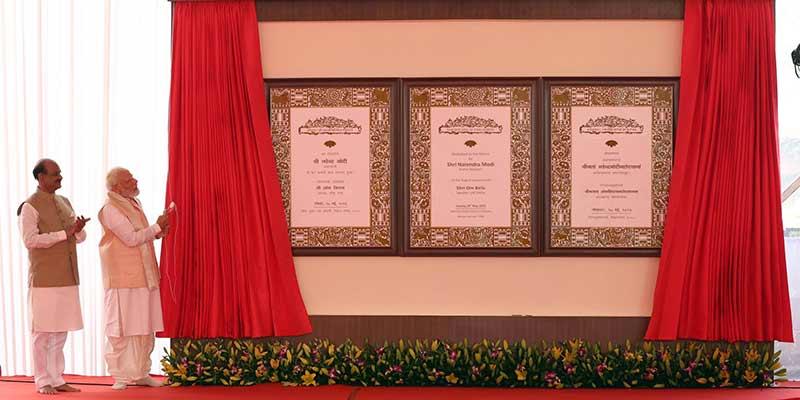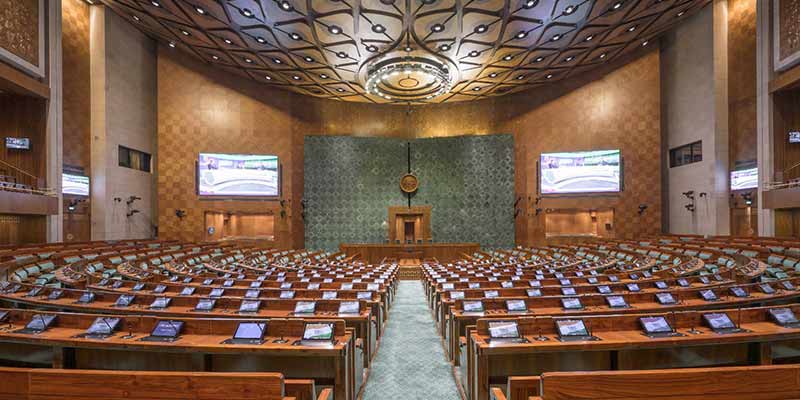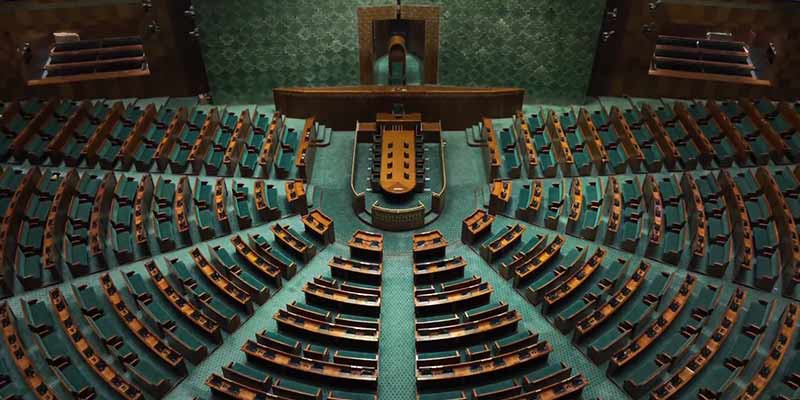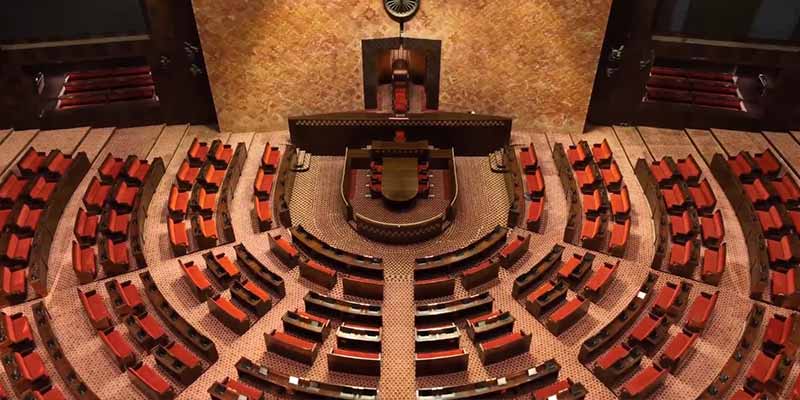- India
- May 28
PM Modi inaugurates new Parliament building
Prime Minister Narendra Modi inaugurated the new Parliament building in New Delhi on May 28 and installed the historic ‘Sengol’ in the Lok Sabha chamber.
The Prime Minister had laid the foundation stone of the new Parliament building, a key component of the ambitious Central Vista project, on December 10, 2020.
The building has been completed in about two-and-a-half years at an estimated cost of nearly Rs 1,200 crore.
Highlights of the new building:
• The triangular-shaped four-storey building has a built-up area of 64,500 square metres.
• Its interiors have three national symbols as their main themes — Lotus, Peacock and Banyan Tree.
• The new Parliament building can comfortably seat 888 members in the Lok Sabha chamber and 300 in the Rajya Sabha chamber.
• Inspired by India’s national bird peacock, the Lok Sabha chamber’s basic colour scheme is green. The chamber is three times bigger than the old chamber.
• The design of Rajya Sabha chamber is based on the lotus, the national flower. The colour scheme is red, with carpet and seat cushions of this colour.
• In case of a joint sitting of both the Houses, a total of 1,280 members can be accommodated in the Lok Sabha chamber.
• The building has three main gates — Gyan Dwar, Shakti Dwar, and Karma Dwar.
• The central courtyard has a banyan tree, the national tree.
• The new Parliament building, constructed by Tata Projects Ltd, will have a grand Constitution Hall to showcase India’s democratic heritage, a lounge for MPs, a library, multiple committee rooms, dining areas and ample parking space.
• It will have separate entrances for VIPs, MPs, and visitors.
• The material used for the new building has been acquired from various parts of the country.
• The teakwood used in the building was sourced from Nagpur in Maharashtra, while the red and white sandstone was procured from Sarmathura in Rajasthan. The sandstone for the Red Fort and Humayun’s Tomb in the national capital was also known to have been sourced from Sarmathura.
• The Kesharia green stone has been procured from Udaipur, the red granite from Lakha near Ajmer and the white marble has been sourced from Ambaji in Rajasthan.
• The steel structure for the false ceilings in the Lok Sabha and the Rajya Sabha chambers have been sourced from Daman and Diu, while the furniture in the new building was crafted in Mumbai.
• The stone ‘jaali’ (lattice) works dotting the building were sourced from Rajnagar in Rajasthan and Noida in Uttar Pradesh.
• The materials for the Ashoka Emblem were sourced from Aurangabad in Maharashtra and Jaipur in Rajasthan, while the Ashok Chakra donning the massive walls of the Lok Sabha and the Rajya Sabha chambers and the exteriors of the Parliament building were procured from Indore in Madhya Pradesh.
• The new Parliament building used manufactured sand or M-sand from Charkhi Dadri in Haryana for creating concrete mix for the construction activities.
• The fly ash bricks used in the construction were sourced from Haryana and Uttar Pradesh, while brass works and pre-cast trenches were from Ahmedabad in Gujarat.
Some facts on the old Parliament building
• The iconic circular Parliament building has been witness to historic and epoch-changing events — be it revolutionaries Bhagat Singh and Batukeshwar Dutt throwing bombs to “wake up” the colonial rulers, the meeting of the Constituent Assembly or the country’s first Prime Minister Jawaharlal Nehru making his famous “tryst with destiny” speech on the midnight of August 14-15, 1947.
• The old building is a British-era building, designed by Edwin Lutyens and Herbert Baker who were responsible for planning and construction of New Delhi.
• The foundation stone of the old Parliament House was laid on February 12, 1921, and the construction took six years. The opening ceremony was performed on January 18, 1927, by the then Governor-General of India, Lord Irwin.
• The building has been witness to historic debates, momentous legislations and the growth of India’s vibrant democracy. It also braved the 2001 attack by terrorists of the Lashkar-e-Taiba (LeT) and the Jaish-e-Mohammed (JeM), in which nine people were killed inside the Parliament complex.
• The old Parliament House building is a massive circular edifice 560 feet in diameter and the open verandah on the first floor is fringed with a colonnade of 144 creamy sandstone columns, each of 27 feet.
• The focus of the building is the big circular edifice of the Central Hall. On the three axes radiating from this centre are placed the three Chambers for Lok Sabha (House of the People), Rajya Sabha (Council of States) and the erstwhile Library Hall (formerly the Chamber of Princes) and between them lie the garden courts.
• The Supreme Court of India also functioned from the erstwhile Chamber of Princes after it was inaugurated on January 28, 1950, till it moved to the present building in 1958.
• The Central Hall is a place of great historical significance as the transfer of power on the midnight of August 14-15 from British to Indian hands took place in this hall.
• The Indian Constitution was also framed in the Central Hall. The Constituent Assembly met there from December 9, 1946, to January 24, 1950.
Manorama Yearbook app is now available on Google Play Store and iOS App Store





